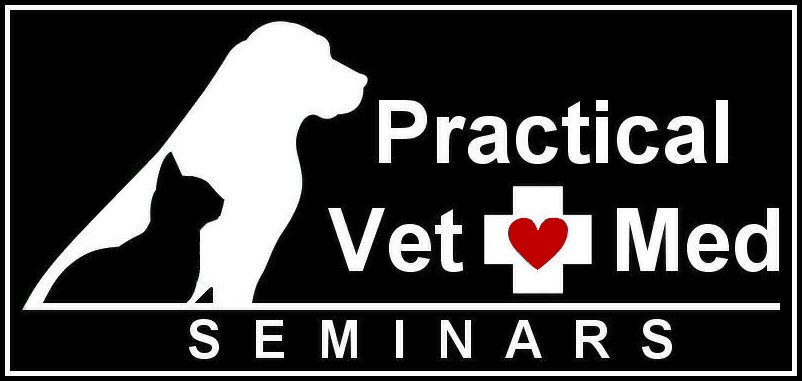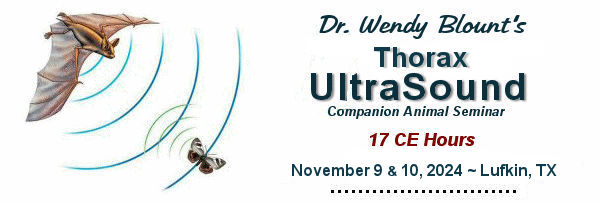| |
"Home Page" (Synopsis)
"Thorax UltraSound"
1794: bats were discovered to navigate using echolocation, the reflection of high frequency sounds. This
discovery became the basis of ultrasound physics.
1942: the first use of sonography for medical diagnoses. An UltraSound beam was transmitted through
the human skull attempting to detect brain tumors.
1956: the first application of UltraSound to animals. A "somascope" ultrasonic unit was used to
measure the back fat thickness on beef cattle.
Today: an ever increasing number of animal owners expect diagnostic imaging such as UltraSound
to be part of the "standard of care". Rather than refer clients out of their
clinic, more and more veterinarians are deciding to provide UltraSound in-house to offer a more complete
client/patient service while adding a valuable profit center.
Dr. Blount invites you to attend this unique 17 CE Hour seminar which
explores exactly how UltraSound plays a vital role in successful diagnosis and treatment of the
Thorax.
This seminar is predominantly cased based lecture with didactic
sessions that present practical knowledge and options for dogs and cats you can put to use starting
immediately in your clinic.
This dictates a primary focus of this seminar which is for attendees
to learn how to effectively recognize Thoracic sonographic abnormalities which can greatly enhance the patient's
diagnosis and care.
Learn to use lung ultrasound to adjust diuretic therapy for your congestive
heart failure patients. Learn to use thoracic ultrasound to determine the next best test, when
patient needs are great and finances may be limited. Learn to make simple measurements, to determine of your patient with a murmur needs to take
pimobendan, clopidogrel or sildenafil, whether or not your patient has congestive failure. Learn to quickly detect pericardial effusion (the silent killer) which is coming into
your practice on a regular basis. If you are not diagnosing it, you are missing it. Learn to tell quickly of your coughing patient has heart failure, lung disease or both. Learn to quickly assess the collapsed patient for implementation of life saving treatment
and putting together your diagnostic plan. Learn to assess quickly if your dyspneic patient needs diuretics and cage rest prior to
more diagnostics, to prevent catastrophic outcome from stressing a decompensated patient.
Whatever your current UltraSound situation this seminar has a lot to offer you:
If you already have UltraSound and are using it in your clinic,
this seminar with enable you to sharpen your skills and reading effectiveness.
If you have an UltraSound in your clinic, but it's a dust gathering eyesore rather than
a useful tool generating profit for you, this seminar will help you turn that picture around.
If you don't have an UltraSound but think you might like to, but are concerned that
they cost too much and require too much time and effort to learn to read and use, this seminar will offer you
some viable solutions.
Even if you are not sure you want an UltraSound machine for your clinic, this seminar
will help you make that decision based on legitimate factors and logical reasoning.
Questions???
Contact Russ
phone: (936) 564-7792 e-mail: seminars@vonallmen.net
Seminar approved by ETVMA
James M. Morton, DVM - President
17 Hour Units for Veterinary CE in Texas
Note: Other states may be added on request
with
sufficient notice. Charges may apply)
Seminar presented by:

|
|

